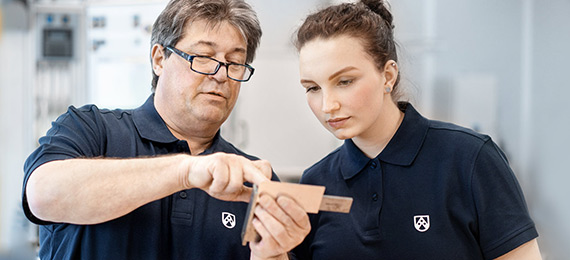Identification - The digital product passport for final components.
Identification is the extension of authentication. Through identification, each product receives a unique product passport in which all necessary information can be stored.
The digital product passport for final components
Identification is the extension of authentication. When the marker particles are added to the starting material in the first step of the SmartMarker® process, a random and thus unique pattern is created by the random distribution of the SmartMarker® particles. This makes it counterfeit-proof. The product now has a unique label that is anchored in the material and used to uniquely identify it. This unique identifier serves as a unique identifier for uniquely linking the product to a product passport. This means that the product passport can be opened any time and can be provided with various product information. This product information can be accessed digitally and does not have tobe physically attached to the product.

1. Define the reference surface
To be able to reliably identify a component marked using SmartMarker®, it has to be stored in a digital database. To that end, a reference surface is defined on the component On this surface there is a random particle pattern of the SmartMarker®. This particle pattern is scanned using the camera.

2. Encoding of the image
A photo of the particle pattern is taken. This photo is then encoded and a unique ID number consisting of a multidigit numerical code (hash key) is assigned to this coding. This numerical code now represents the product and can be used as a link to a digital product passport.

3. Feed into the database
Image encoding and ID number are saved in an image database. Now, digital product information can be added to this code, such as serial number, material, production date, order number etc. This way, the identified particle pattern is directly related to the component.

4. Identification
Identification is performed later using a camera. To do so, the newly created image is encoded again and compared to the existing encodings of the image database. If these codes match, the ID number previously assigned to the component is output and can be used as a link to the product passport database. In this way, the information on the component stored in the product passport can be accessed.

5. Portus
The product passport is stored in Portus, the digital IoT platform, and can therefore be retrieved at any time. In Portus, you access all relevant and predefined data from your machine. Your mobile device can be used for that purpose. This means that you can access the necessary product information for your components anywhere and at any time.

6. SmartMarker® as a technological successor
Unlike RFID chips, QR codes and barcodes, SmartMarker® products ensure that all (product) information is securely embedded in the end product and can be accessed at any time - even if parts of the prodcut are no longer present due to wear of defects.





